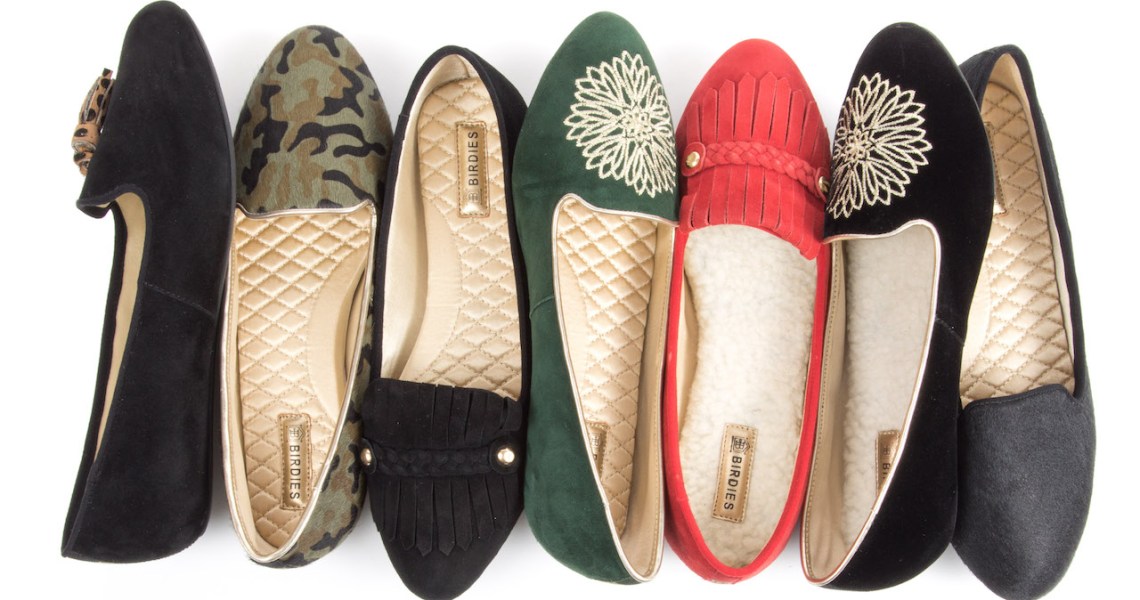Investors are pouring money into DTC slipper-shoe brands. San Francisco-based women’s slippers brand Birdies raised $8 million in funding this week, on top of the $2 million it started with. Its competitor and fellow San Francisco native Rothy’s, which also makes an indoor/outdoor shoe, received $35 million in late December from Goldman Sachs in anticipation of its expansion into new international markets.
These brands are doing well. According to Birdies, its sales were up 400 percent in 2018 from 2017, and the company is on track to quintuple its year-over-year growth in 2019. Rothy’s posted nearly $140 million in revenue in 2018.
“We have struggled to keep up with demand,” said Bianca Gates, the co-founder of Birdies, who claims that the current waitlist for the brand’s slippers exceeds 30,000. “First on the agenda is to make sure we have enough inventory to keep up with demand. We recently purchased a huge stock of our most popular slipper — way more than we thought we would need, and it still wasn’t enough.”
Ultimately, the slipper trend taps into the larger undercurrent in fashion of casualization. So many products that were once only worn at home, at the gym or in bed — like athleisure wear and sneakers, for example — are now common go-tos for the street and even the office. To cater to the trend, a number of brands that started making casual styles in one category have expanded their offerings. For example, Express launched a collection last September geared entirely around the idea of blending casual and office wear. Brands like Allbirds have also helped blur the line between casual wear and more office-appropriate attire.
“I would say the underlying piece of this trend is a shift toward comfort, especially for women who have previously been ignored in the casual footwear category,” said Richie Siegel, founder of consumer advisory firm Loose Threads. “Casualization is continuing in the workplace, so people can wear more comfortable products in more situations, and versatile products that can be worn high and low have a growing market. That’s an opening these brands have, and timing and cultural shifts are on their side.”
Gates said tapping into this trend was not originally part of Birdies’ plan.
“There hasn’t been much innovation in slippers in decades,” she said. “We designed our slippers to be worn indoors, for entertaining or lounging. A frustrating problem was seeing influencers wearing them outside and making people think that’s what they were meant for. Competing with outdoor shoes was not something we were trying to do. But we had to understand our customers’ desires, which meant adapting [our concept] and adding a thicker outsole so our slippers could be worn outside.”
Ad position: web_incontent_pos1
But not every slipper brand has taken off. British brand Mahabis went bankrupt at the end of 2018, with government administrators stepping in to ensure all of the brand’s creditors were paid. Like Rothy’s and Birdies, Mahabis grew rapidly within its first few years of life, selling nearly a million slippers. Yet just as quickly as its star rose, the company abruptly collapsed with little explanation as to why.
Gates said manufacturing footwear that is meant to be worn both in the house and outdoors is difficult from a technical standpoint. Most footwear factories are highly specialized, with different facilities making high heels and boots and sneakers, for example. The kinds of slippers that are catching on today need to be gentle enough to be worn inside yet sturdy enough to walk around outside. It took Birdies two years to find the right factory that could handle the task.
But even with vast amounts of money being poured into the big slipper brands from investors like Norwest Ventures and Glossier investor Forerunner Ventures, both of which invested in Birdies, it remains to be seen if slippers will have staying power.
“The risk is that the trends in San Francisco and New York City won’t scale out to other parts of the country and the world,” said Siegel. “Allbirds has bucked this trend so far with its U.S. and now China expansion, but there is a constant tension between what the early adopters like and what the larger world will like. So the jury is still out on this [trend] — although Rothy’s is quite ahead in the race.”




